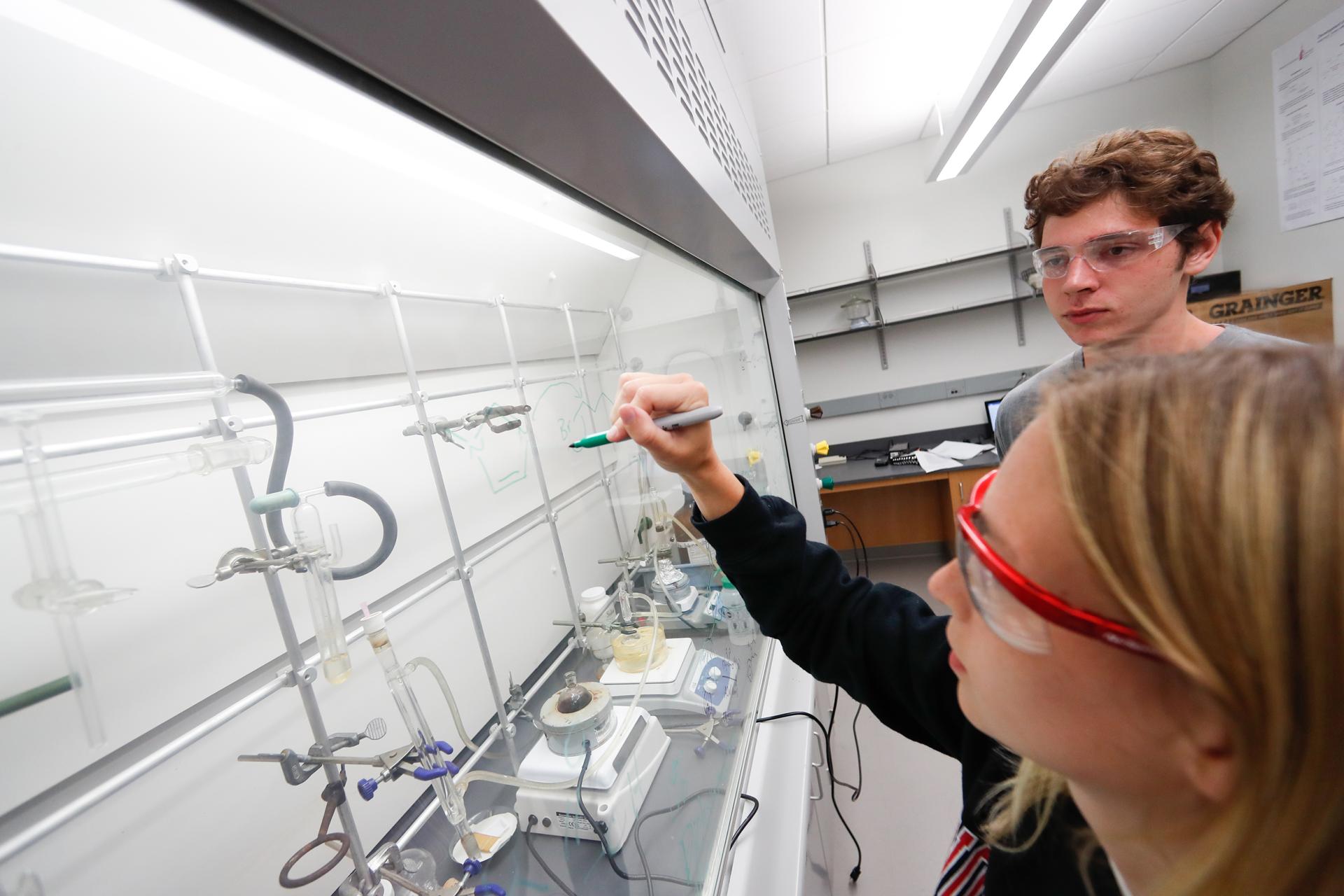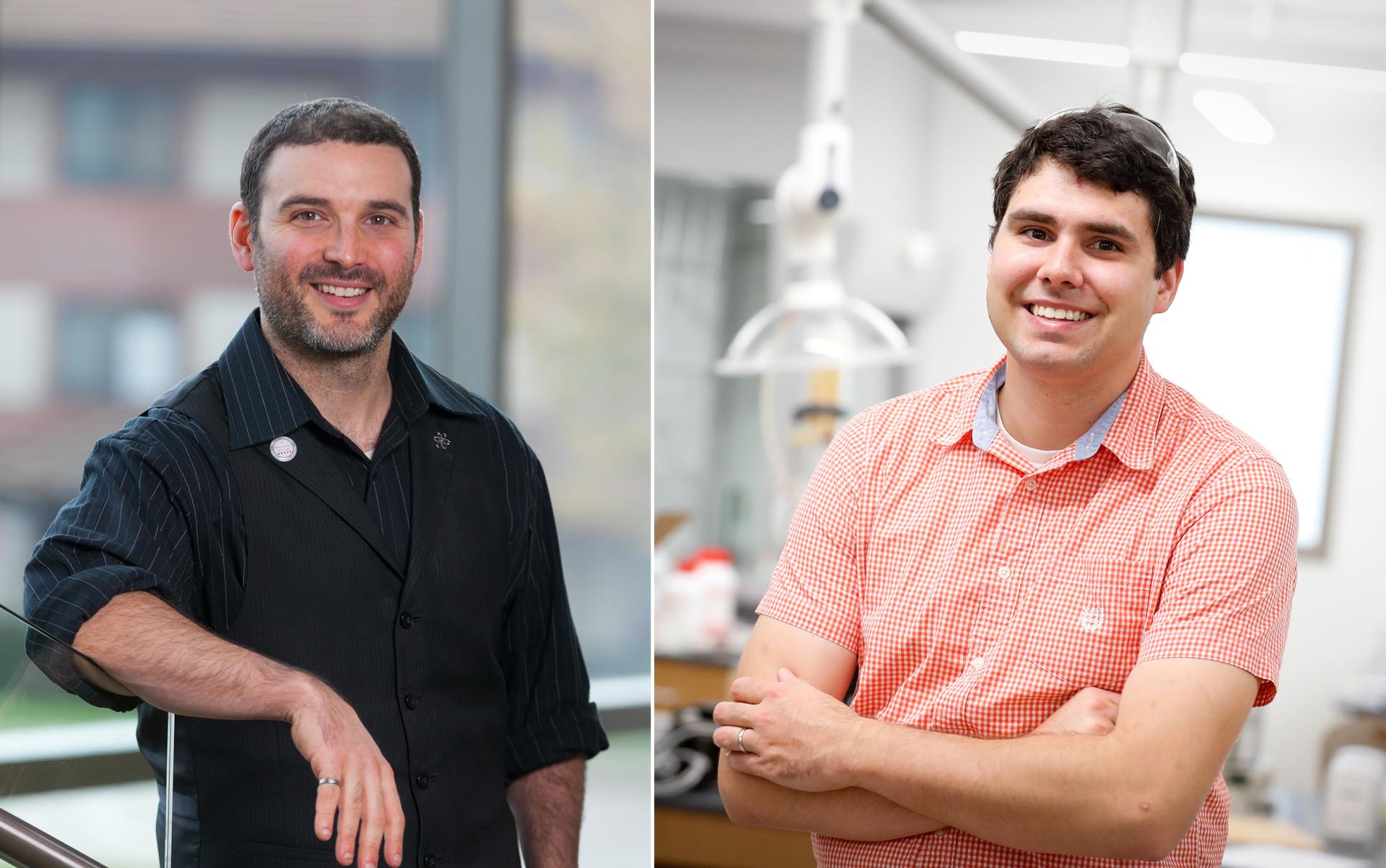Some 84 students and faculty were engaged in the summer research program on campus. Projects spanned multiple disciplines, from business, psychology and the sciences to theatre, computer science and languages. Students had opportunities to pursue independent or faculty-directed research projects and all were invited to participate in the Summer Undergraduate Research Colloquium (SURC).
The colloquium featured weekly group discussions, faculty speakers and opportunities for students to present progress on their research. “Scholarship isn’t scholarship unless it’s communicated,” said Mauro. “Students learned to present what they’ve done and gained valuable skills. The whole experience builds our community of researchers.”
Mauro and Assistant Professor of Chemistry Nicholas Boaz designed their projects to overlap. Physics major and aspiring chemical engineer Mayson Whipple ’18 (photo, below) and biochemistry major Anthony Dominic ’20 (photo) worked with both faculty on a project with potential to impact an industry.


